work in wood at the craft market
/
The craft market on Frue Plads is not an obvious venue for craft pieces in wood … the cabinet makers' guild hold regular exhibitions for major pieces and also general design shows and markets such as northmodern or the Finders Keepers market are a good place to find handmade one-off or small run pieces in wood made by craftsmen.
However there were two stalls at the Frue Plads market that had work in wood and both illustrated simple but important points about good design.
Monomade in Denmark was founded by the architects Kira Snowman and Uffe Topsøe-Jensen and is based in Copenhagen. Their beautifully simple - or, rather better to say, deceptively simple pieces - show how important it is to design with clean lines, careful use of appropriate proportions and using the very best timber to highlight and enhance the qualities of the material itself … the goal is to achieve a balanced partnership between the natural material and the skill of the maker.
The ceramicist Jenni Godtlebsen used shelves and a hanging rack by Vestwood with her amazing cups and plates to show how the the pieces do have a clear functional role in a kitchen as well as being beautiful ceramic works but the juxtaposition of fired and glazed pieces set against the natural wood emphasises that ceramics too are made from a natural material. As with timber, it is the variations and the slight irregularities in the finished and fired ceramics that give the works a warmth and vitality.
ceramics by Janni Godtliebsen with wood peg storage rail by Vest Wood
Kunsthåndværker Markedet … amazing art or beautiful utility?
/
A significant proportion of the ceramic works on show at the craft market were clearly decorative and that’s fine … the potter as ceramic artist or maker. Glass at this level of design and craftsmanship tends to be more practical so there were certainly wine glasses and jugs at the market but still plenty of presentation pieces. Many of the stalls had flowers or fruit in their vases or bowls but this was presumably to make the display as attractive as possible rather than suggest clear practical use.
Believe me, this is not a criticism of the designers and artists but may simply reflect the practical approach of the Danes to buying table ware and glass and ceramics for their dining rooms and kitchens. There is probably a clear division in people’s minds between decorative work and practical table ware. I was just curious that although there were mugs and so on, which were clearly to be seen as something special … a gift or a treat to oneself … it would have been difficult to go around the market and buy enough tableware to set a table for a full dinner.
Perhaps this is not the right venue for that … the Kunsthåndværker Markedet does show the work of some of the best craft artists in the country but on the other hand it does deliberately call itself a craft market and not an art fair.
mugs by Janni Godtliebsen
design classic: Margrethe Plastic Bowl 1950
/Margrethe Plastic Bowl - Collection of Designmuseum Danmark in Copenhagen
Designed by Sigvard Oscar Fredrik Bernadotte (1907-2002) - son of King Gustav VI of Sweden - an industrial designer who founded Bernadotte & Bjørn Industry Design (B&B) in Copenhagen in 1950.
ICHI by Ole Palsby Design
/At the time of his death in 2010, the Danish designer Ole Palsby was working on a range of cutlery with the Japanese master craftsman Kazonsuke Ohizumi whose workshop is in Niigata. Mikkel and Caroline Palsby discovered the working drawings by their father not only for that cutlery but also for other proposed designs along with trial pieces including a kitchen knife made by the Japanese workshop that had been used in the family home for over a decade but had not been put into production.
The family decided to form a new design studio to continue both the work of their father and the well-established working relationship with the craftsmen in Japan.
ICHI, the Japanese word for first, is the new cutlery range that is now in production and is available in two finishes - matte steel and a titanium finish. An initial trial piece had been given a polished finish for the handle but the Palsby’s, after some deliberation, felt that an overall matte finish would be more appropriate now. The dark grey-black finish of the titanium cutlery not only brings a new aesthetic to table settings but provides an important alternatives for people who have an allergic reaction to steel.
Ole Palsby came to design in his 30s after an early career in banking. He had friends and close contacts in the world of design and architecture, including Poul Kjærholm and Vilhelm Wolhert, and developed an interest in Japanese design and architecture. Initially, he opened a kitchenware store in Copenhagen and then moved on to design tableware and metal and glass cookware for companies including Eva Solo, Alfi and WMF.
His approach to any design project was to go back to first principles not just to simplify a design - he talked about purity in design - but he analysed, as an engineer might, the human actions involved.
Working with the craftsmen in Japan the result is flatware that has features that, from a European viewpoint, looks novel or at least distinct. Bowls of spoons are wide and shallow, the angle of the relationship between the bowl and the stem has been rethought, and knife blades have a distinct deep bowed shape to cut sharply without crushing. The balance of kitchen knives also feels different … the result of rethinking not just the shape but also by working and reworking the details of each piece with the Japanese masters. This was not to produce Japanese cutlery but rather to rethink pieces that have a specific use in Denmark … so one knife is flexible and shaped for spreading but also has a sharp cutting edge to its blade so that when making a Danish open sandwich swapping knives is not necessary and on the forks the central two tines are just slightly longer so they make an initial break into the surface so the fork cuts into the food rather than crushing it - particularly useful for eating Danish cakes. The same tight focus on details can be seen in the kitchen knives ... the honed and sharpened edge returns back towards the handle at the base of the blade for deftly making a nick to initiate any cut.
Last May a new show room for Ole Palsby Design was opened in Copenhagen in Ravnsborg Tværgade, a street that runs back from the lakes, on the outer side of Sortedams Sø, close to Dronning Louises Bro.
Ravnsborg Tværgade 7, Copenhagen N
Here, along with the new cutlery, there is also on display earlier tableware and kitchenware designed by Palsby over his long and productive career. There are plans to put some of these designs back into production or to realise some of the ideas and preliminary designs from the archive. As with By Lassen in Copenhagen, Mikkel and Caroline Palsby have shown that it is possible for families to find a way of taking forward the legacy of a major designer’s work by making classic pieces a starting point for new designs.
the porcelain collection of Designmuseum Danmark
/
The display of porcelain at Designmuseum Danmark in Copenhagen, closed while the roof of the east range of the building was repaired, has just be re-opened.
The collection includes not just porcelain from the Royal Copenhagen factory that opened in 1775 but porcelain from the earlier works at Store Kongensgade in Copenhagen and at Kastrup on the island of Amager along with good examples from porcelain factories in the Netherlands and France as well as other countries around the Baltic including north Germany.
The quality of the pieces and the variety of tableware items, with so many different functions, reveals much about the life style of affluent middle-class families and aristocrats in Denmark in the 18th and 19th centuries. Ceramics, along with glass and flatware were early examples of high-quality design for large-scale production in a workshop or early form of factory.
food cover made in the Copenhagen factory in Store Kongensgade
tureen from the porcelain factory at Kastrup
the very best of Danish design at northmodern
/
northmodern provides an opportunity to see, together in one place, the huge range of furniture, lighting, tableware, kitchenware and so on that is currently produced in Denmark … the works of individual designers, the products of Danish workshops and manufacturers and the current catalogues of major design stores.
Some new young designers, like Overgaard and Dyrman and Makers With Agendas, have been discussed in other posts, so those reviews are not repeated here and obviously some major companies were not showing at northmodern this year, so, this is a personal selection of outstanding Danish design from established designers or well established companies that was shown at northmodern in August 2015 and exemplify why the Danish design industry is so strong.
Ole Palsby
Caroline and Mikkel Palsby have established their company to produce and market designs by their father but have also launched appropriate new ranges, focusing on tableware and kitchen knives, including the cutlery range ICHI.
In the early summer they opened a new studio and shop on the outer side of the lakes in Copenhagen, in Ravnsborg Tværgade, and there will be a longer profile of their studio and work on this site next month.
This is the very best of design where quality and attention to every detail is paramount and these standards are being taken forward to build on an important part of Denmark’s design heritage.
OneCollection
The furniture company Hansen & Sorensen was established by Ivan Hansen and Henrik Sørensen in 1990. They changed the name of the company to OneCollection in 2007.
They both came from a background in making and selling furniture and it is interesting to read the introduction to their company on their web site where Henrik Sørensen explains that the ”cornerstone” of their company is “our fervent passion for furniture and design - this is why we are often called furniture nerds.”
This explains, in part, their focus on Danish design history. Early pieces produced for the company were designed by Søren Holst and Henrik Tengler but in 1998 they were approached by the widow of Finn Juhl to make one of the Juhl sofas - the Model 57 - and this led them to explore and study Juhl’s archive of designs. They relaunched the Poeten sofa and then the Pelican Chair that originally had only been released in a very small run. OneCollection now holds the rights to all designs by Finn Juhl.
At northmodern they showed the special anniversary edition of the Pelican Chair and on their main stand the Nyhavn Dining Table designed by Juhl about 1950, with his award-winning Reading Chair from 1953 and a 53 Sofa.
A curious characteristic of this furniture is that if you know it only from photographs, then the impression is that it is quite large - the Pelican Chair looks almost monumental whereas in fact it is relatively compact - and by setting the furniture within a room-sized space at northmodern, defined and contained by bookcases on what would have been open sides of the stand, it showed how well the furniture would work, even in a relatively small apartment.
PP Møbler
The family-owned joinery workshop was established in 1953 and has focused on craftsmanship and developed and deliberately sustained their understanding and real appreciation of the qualities and characteristics of the timber they use to make their furniture.
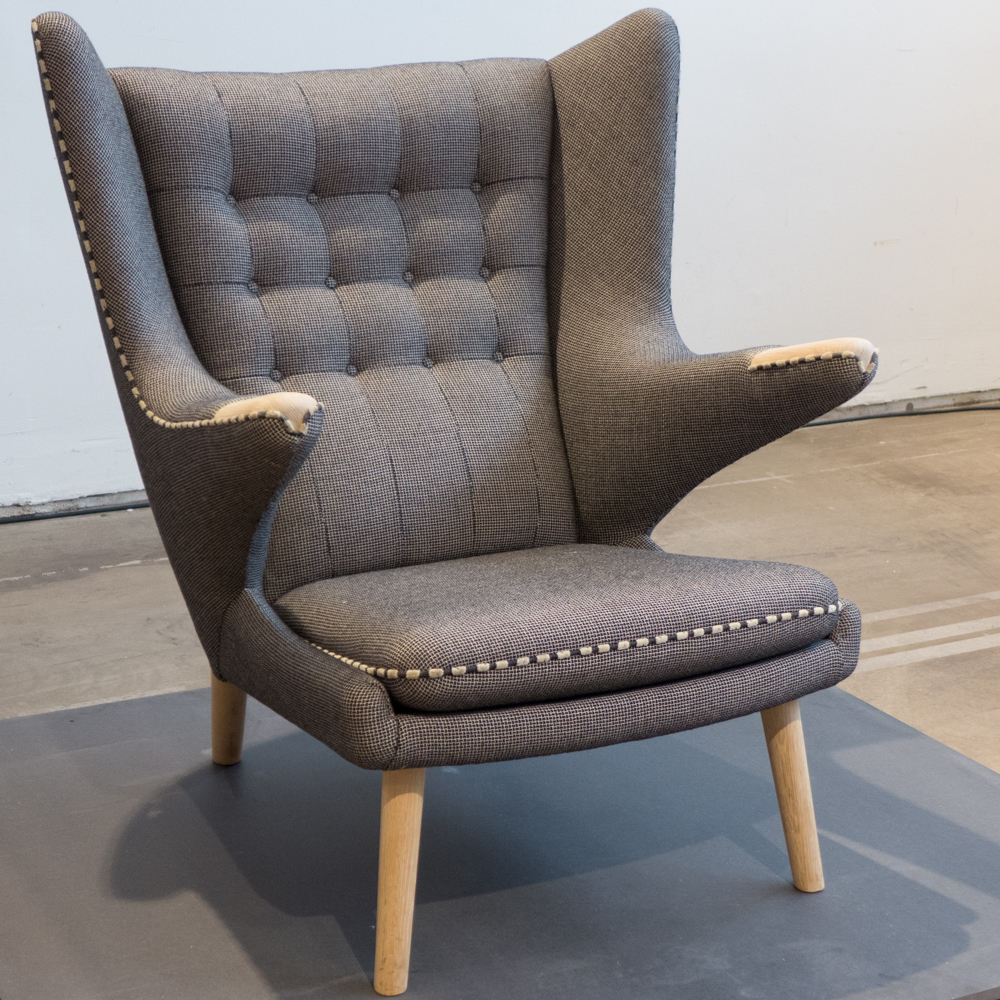
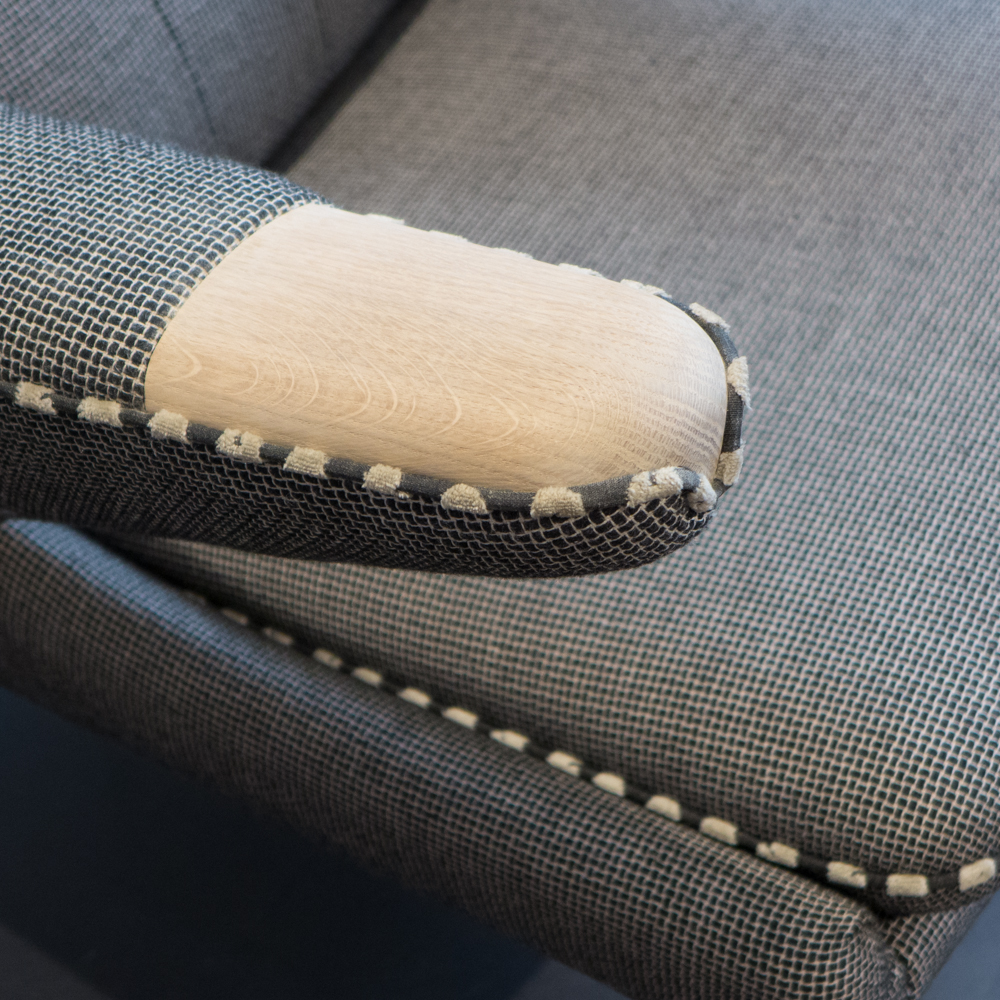
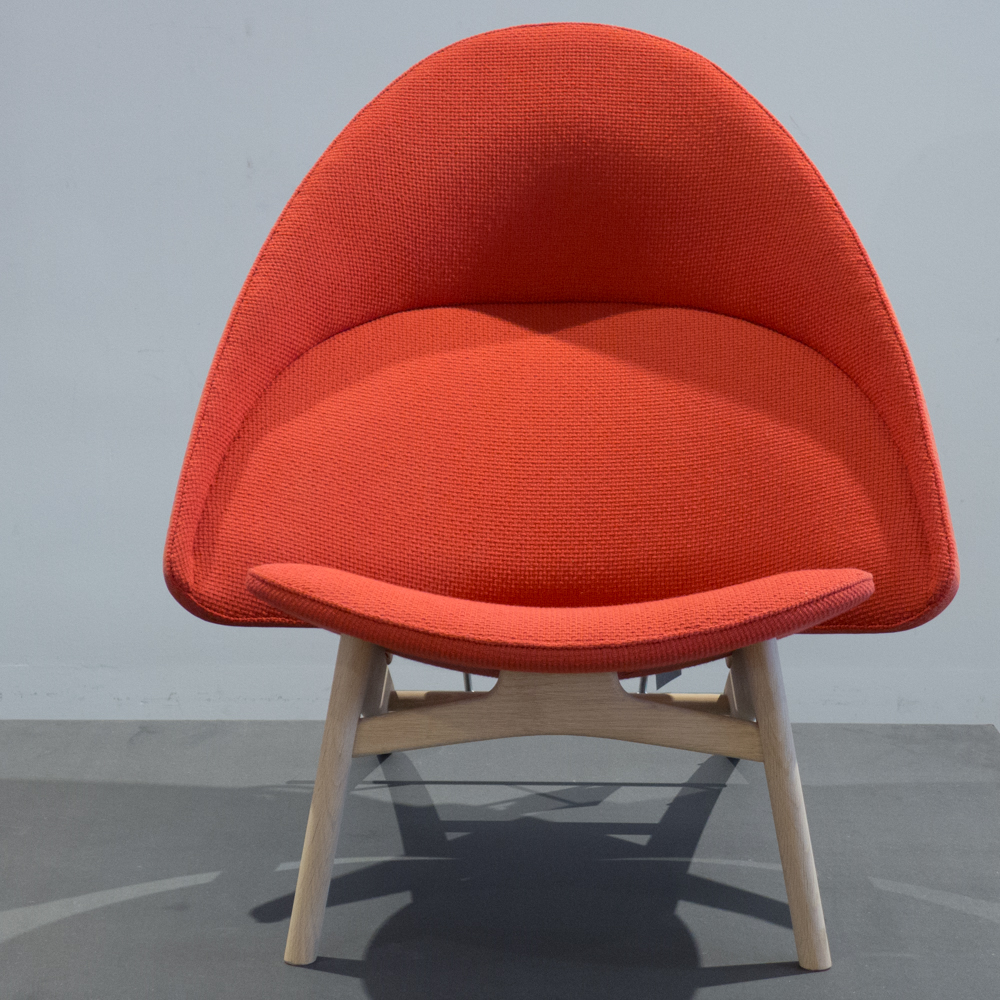
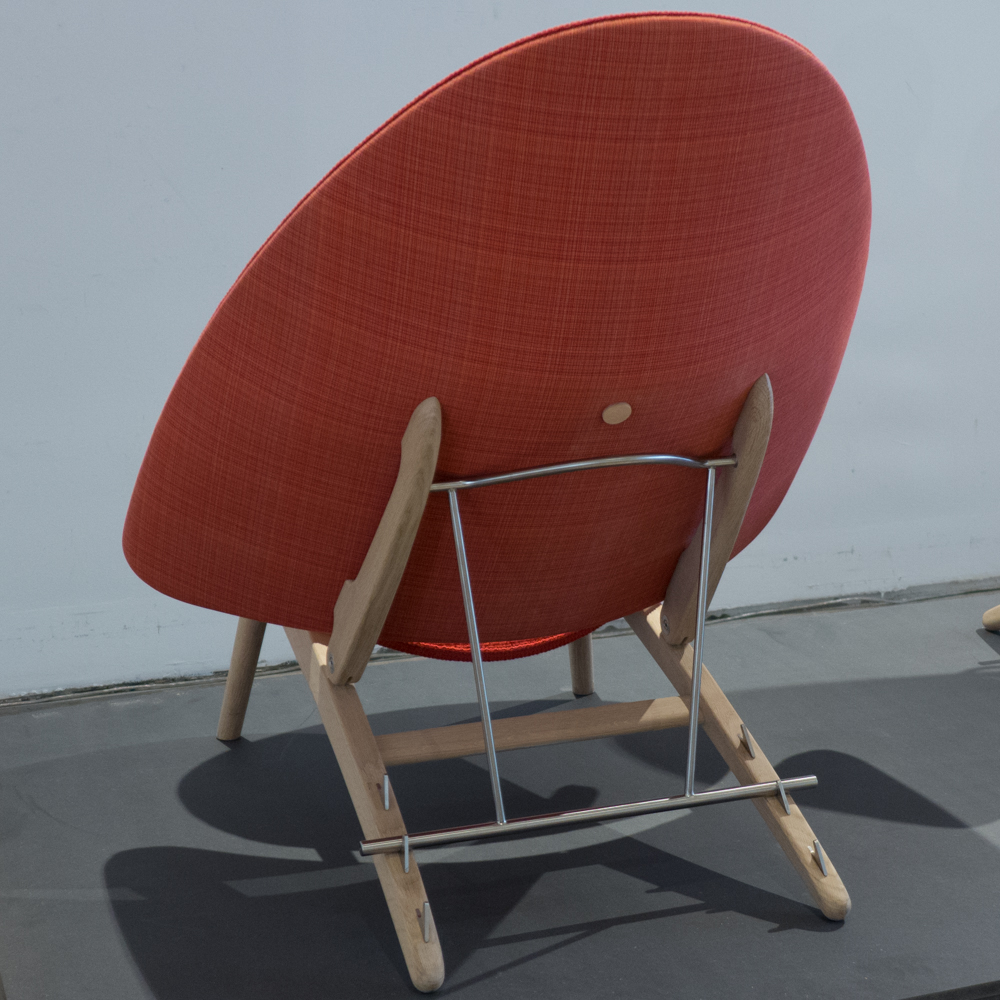

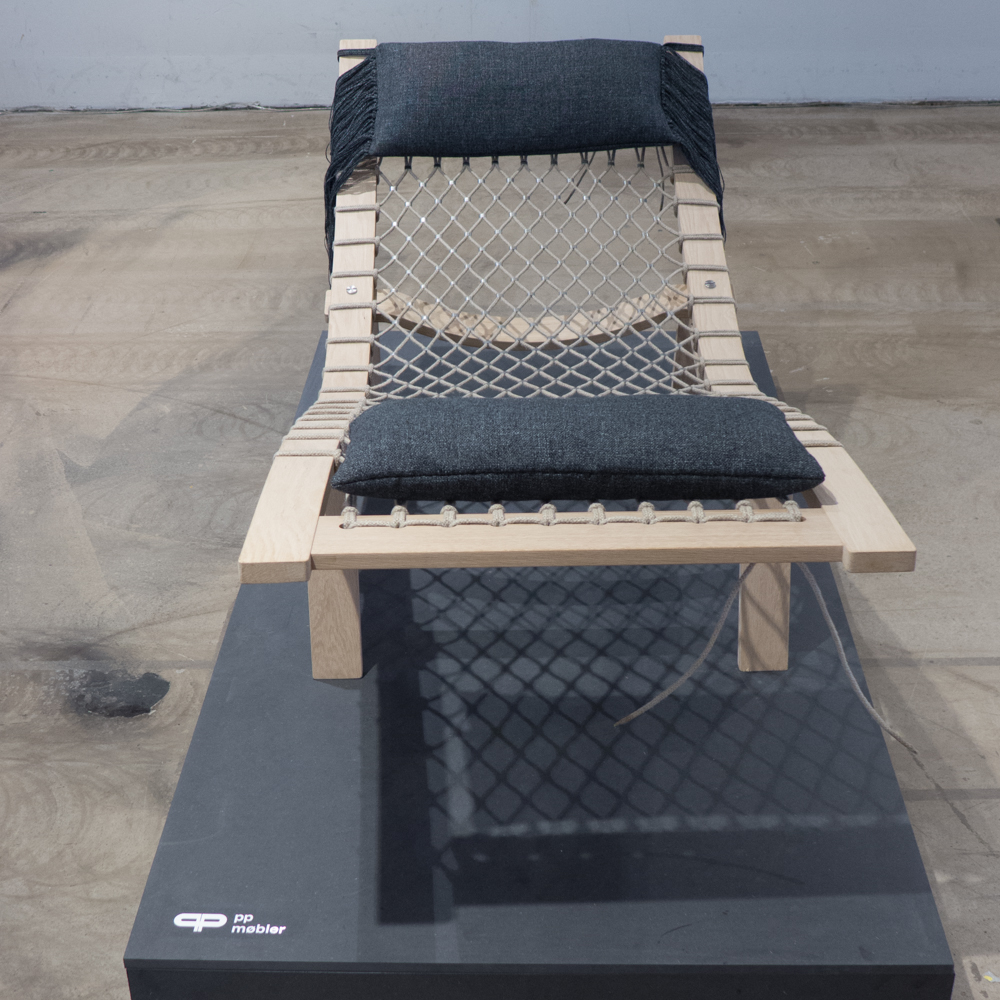

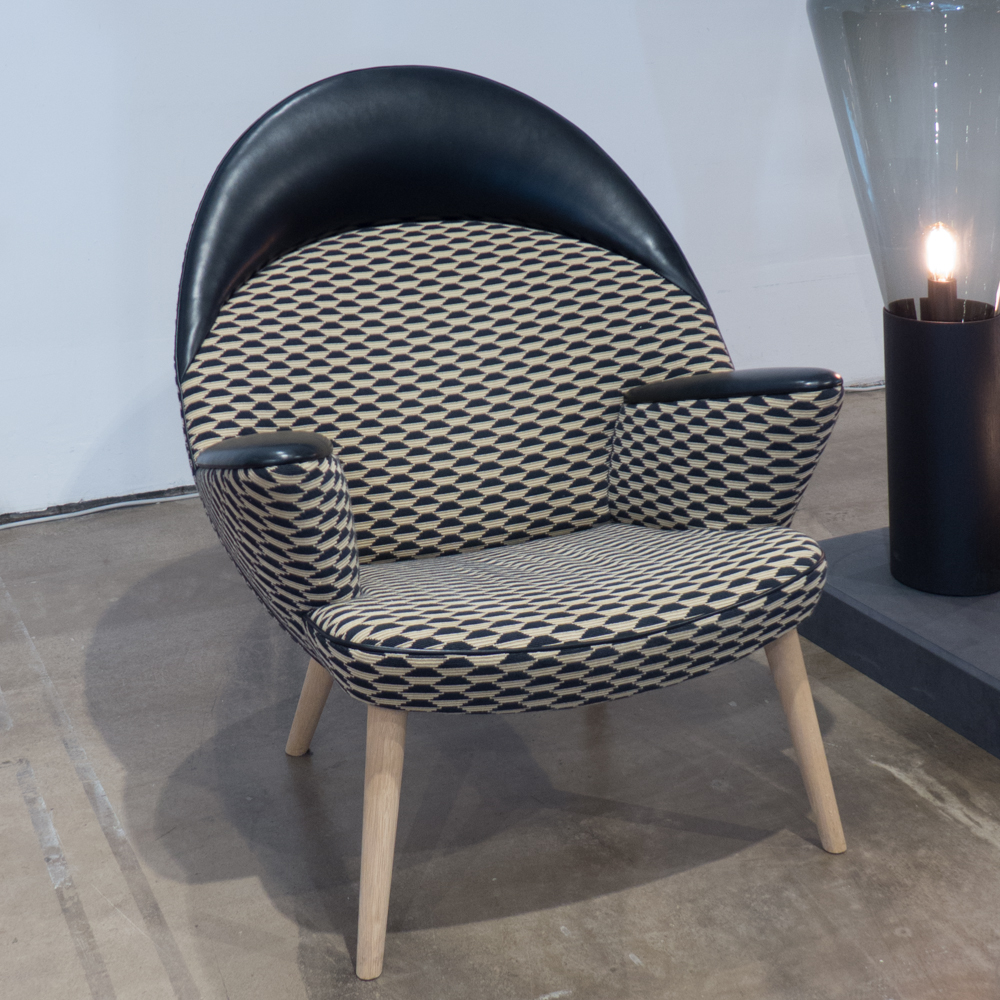
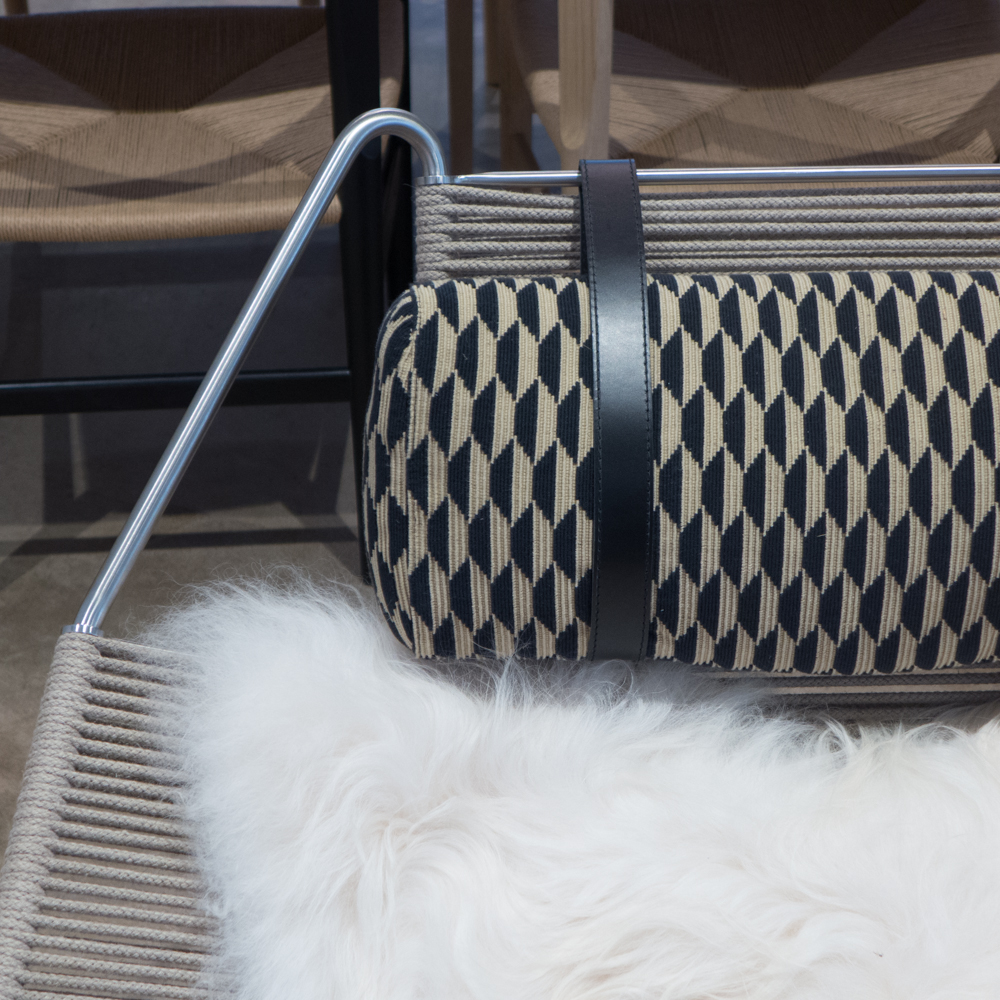
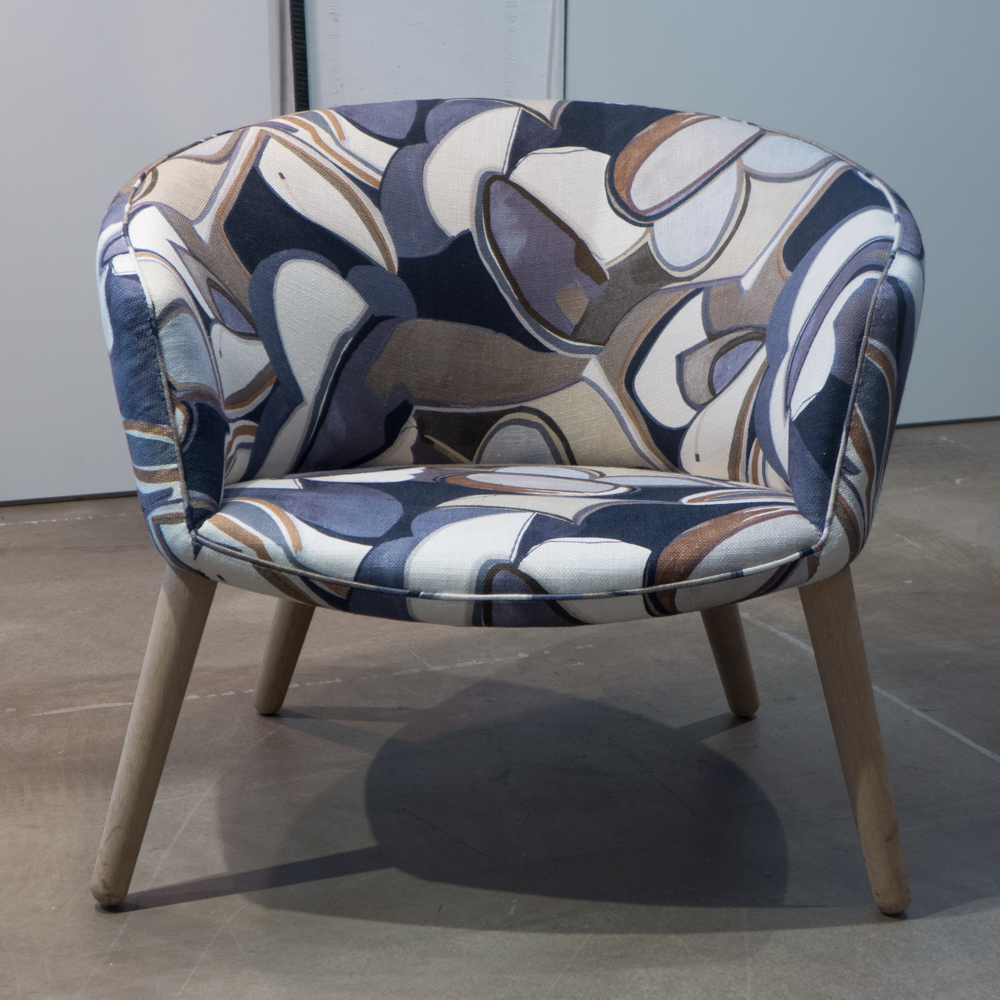
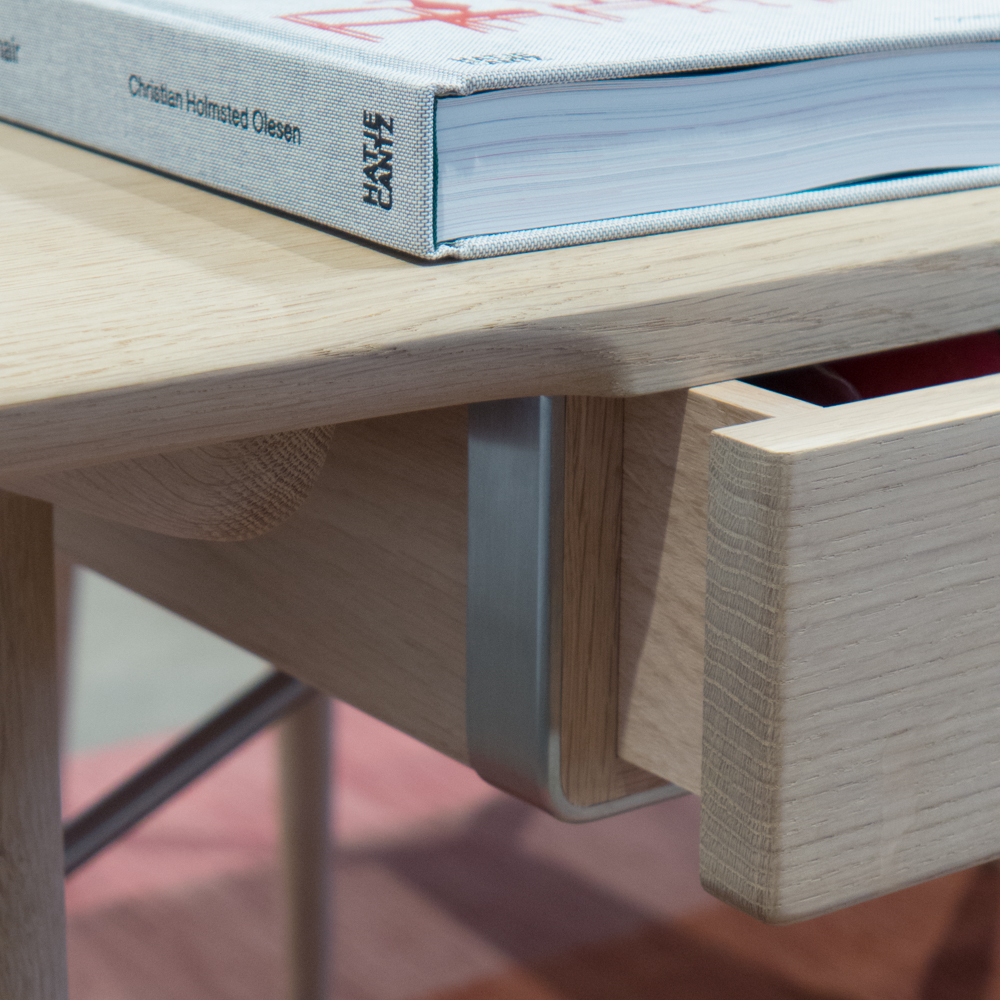
They continue to produce classic designs by Hans Wegner … pieces that are so well known that, exhibited at northmodern, they needed no labels. Upholstery and some colours or the choice of specific woods have been updated if appropriate but the construction and, more important, the quality of workmanship maintains the standards set for the original pieces.
PP Møbler do produce works by contemporary designers with furniture by Thomas Alken, Søren Ulrik Petersen and Jørgen Hoj and again it is the quality of construction, the quality of the timber used and the standard of the craftsmanship and finish that are paramount.
In the main central gallery at northmodern there was a stark and revealing exhibition, also by PP Møbler, with a line of their framed chairs designed by Wegner that visitors to the fair could try but with, in addition, a cut-through section of the back rest with a profile of the human spine to show exactly why these chairs provide support and are so comfortable.
Wegner’s criteria, when judging any chair, was that not only should it look good when viewed from any angle but that it had to be comfortable - not just in the five minutes after someone sat down but as they twisted and moved around as they ate sitting at a dining table or as they sat over a long period as they worked at a desk.
The very best designs combine aesthetic appeal with quality of production and, ultimately, with practical utility: it is not enough that a piece of furniture or an item of tableware should look good but it should be well made, the design and the method of manufacture should, at the very least, be appropriate to the material but should, if possible, exploit and enhance the natural qualities of the material and the piece should do what it was designed to do and do that well. Simple to say ... not so easy to realise.
Lotus by Arne Clausen
/northmodern gives designer and companies an opportunity to launch new designs or new ranges and several companies had both a main stand to show the products from their main catalogues but also had separate areas in the entrance or in the main halls to spotlight a specific design.
Lucie Kass have reintroduced the ‘Lotus’ pattern by the Norwegian designer Arne Clausen who was born in 1923 and died in 1977. Lotus was commissioned by the Norwegian company Cathrineholm, initially for enamel wares, and first appeared in 1965 but the design was also used by the Danish pottery Lyngby Porcelain. The range of ceramics and porcelain tableware from Lucie Kass has been launched to mark the 50th anniversary of the design.
the Tomorrow Collective
/ECCO CARRYING - Jingyi Zhang / TERRA urban root cellar - Ida Gudrunsdotter / YOYO BASKET - Nan Jiang
This is an exhibition by students from the Master’s Programme at the School of Industrial Design in Lund and is a collection of items, all well made, that question and challenge the assumption that any domestic chore must now be done by something plastic with a chip and a plug. And what is also clear here is that there is a sense of pride in the process of making ... so what is common to all the pieces is that they are made from natural materials using traditional craft skills.
It is a brilliant and inspiring exhibition and even more important because it comes from industrial designers … or better still the next generation of industrial designers.
In part the designs take us back to the household items that you can see in the old town houses in the open-air museum in Lund or domestic items from the past that are displayed in the Danish open-air museums in Aarhus and at Frilandsmuseet north of Copenhagen but those items tend to be from old rural crafts and there is, in part, a sense there of people making do and making themselves what was not available to buy but all these items here in the exhibition could be produced commercially.
This is not nostalgia ... not a sort of romantic revivalist view of a cosy kitchen from our grandparents' past.
These designers have taken a very serious and realistic look at what we do and how and what we make and what we throw away. Sometimes it is useful and sometimes actually necessary to look at where we are, wonder if it is the right place and maybe go back down the road to a cross roads and explore if another road might be more interesting.
Basically they are saying take a step back and look at what you do and why and how and possibly, with ingenuity, sustainability can be very stylish and actually fun.
But they also make a very serious point …. “In a time when the single person is becoming more and more distanced from where things come from, how they are made, what they are made of and where they inevitably end up, it becomes increasingly harder to see the consequences of our lifestyles and choices. We depend on fossil fuel driven transportation systems, monocultural large-scale farming and non renewable, toxic energy sources. Our economies thrive on productivity and consumption and we live like there’s no tomorrow. The Tomorrow Collective is about exploring ways of enabling us to live a sustainable life in the future. Inspired by past knowledge of how to grow, make and be, the project presents concepts for modern tools and systems that can be used in a cyclic sense, within private homes or to share in smaller communities.”
M FOR MILK within one's reach - Judith Glaser
THE BURKS - Oskar Olsson
LITTLE THUMB save the crumbs - Elena Biondi
WOODEN IRON simple clothing care tool - Ausrine Augustinaite
FLAVOUR OF TIME preserve the unique feeling of daily food and seasonal flavour - Reo Letian Zhang
MICU smart choice for a healthy conscience - Andrea Müller
THE TOOTHPASTER nice and simple - Olof Janson
SHAVING KIT long lasting shaving tools inspired by the past & the present - Philip Andersson
Even now, electric gadgets with smart technology do not rule our homes completely … many people still have wooden spoons in the kitchen or one of those wooden lemon juicers and lots of cooks use a pestle and mortar to grind their own herbs but one of the points made here is that often a specific contraption for a specific task might be used once or twice and then confined to the back of a cupboard. Could there be a simpler way of doing some things? Is the purchase of a clever-clever time-saving devise our real priority? Whatever the cost in terms of the energy and the materials consumed? In that profit and loss account is a little time gained worth the loss from the satisfaction of doing something ourselves?
After looking at the exhibition I remembered that when I cleared my mother’s house, after she died a couple of years ago, I came across a butter knife that I had used at my grandparent’s house when I was a small child and some brushes my grandfather kept in his own drawer in the kitchen for when he came in from the garden and wanted to wash and they still smelt of the specific soap and and the tooth powder he always used … he was a late and reluctant convert to toothpaste. Memories suddenly came flooding back. If we chuck out and replace everything because it all has a short shelf life and the replacement is cheap, is it not just sustainability we should worry about but also the loss of our own sense of time and place?
There is a full catalogue of all the pieces on line with photographs and links to all the designers
The exhibition continues at Form Design Center, Malmö until 30 August 2015
Next Door
/
The full name of this shop in Østerbro is NEXT DOOR Recycle your rooms. Christine Løschenkohl Holm and Christine Heiberg sell furniture, ceramics, glassware and rugs and textiles mainly dating from the mid 20th century. The shop opened last summer but is already well established.
They have agents scouting for good pieces and they use an Instagram site and Squarepics and Iconosquare well as a very appropriate ways to show customers what has just arrived in the shop. The turn round of stock is rapid … I walk past here a couple of times a week to get to my local coffee shop or to look into Goods … and it is always beautifully arranged.
One really strong characteristic of Danish homes is the way that good design is mixed with skill to match Classic mid-century design with current pieces or to have starkly modern pieces of furniture in old rooms with panelling and ornate plasterwork or to use antique pieces in starkly modern glass and steel apartments.
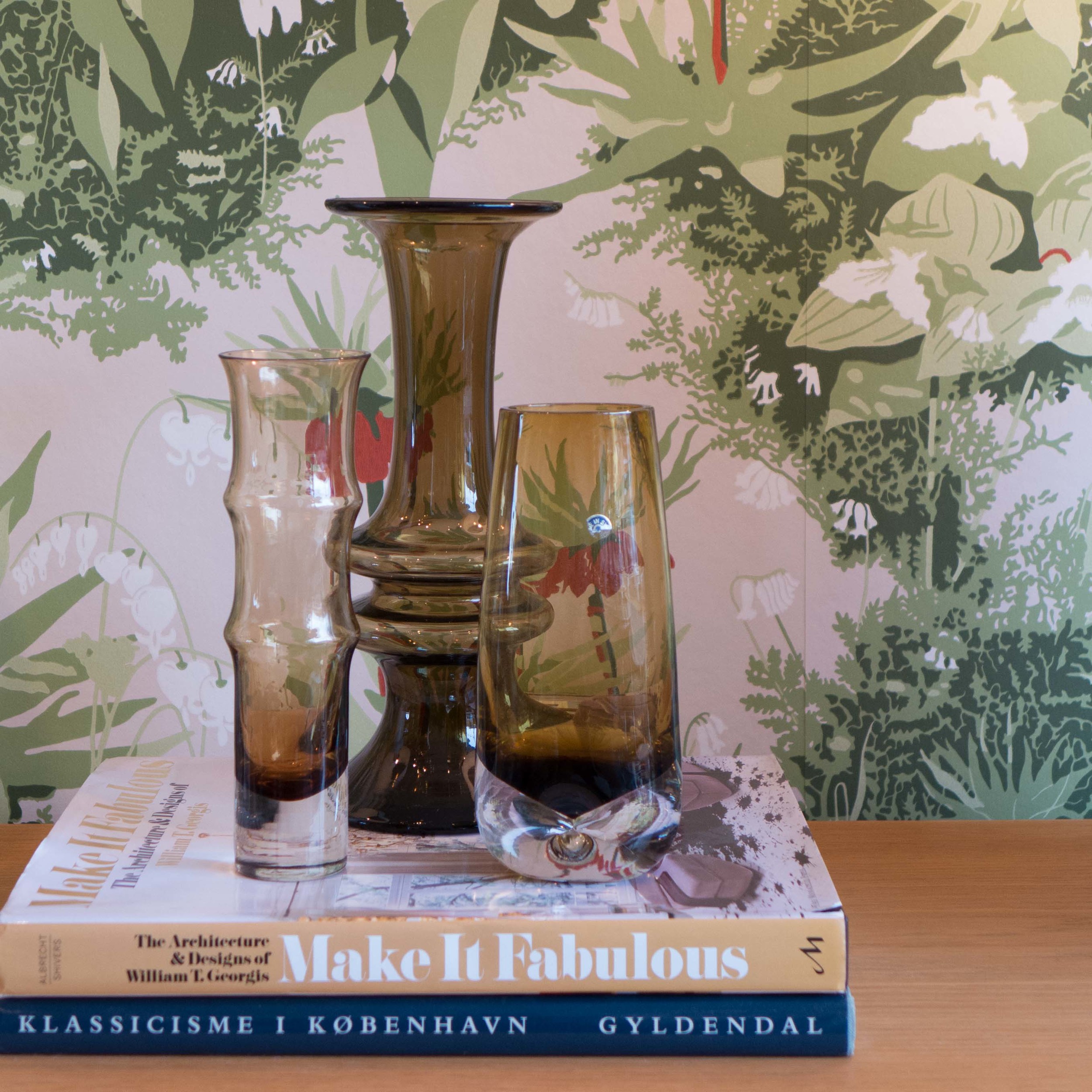
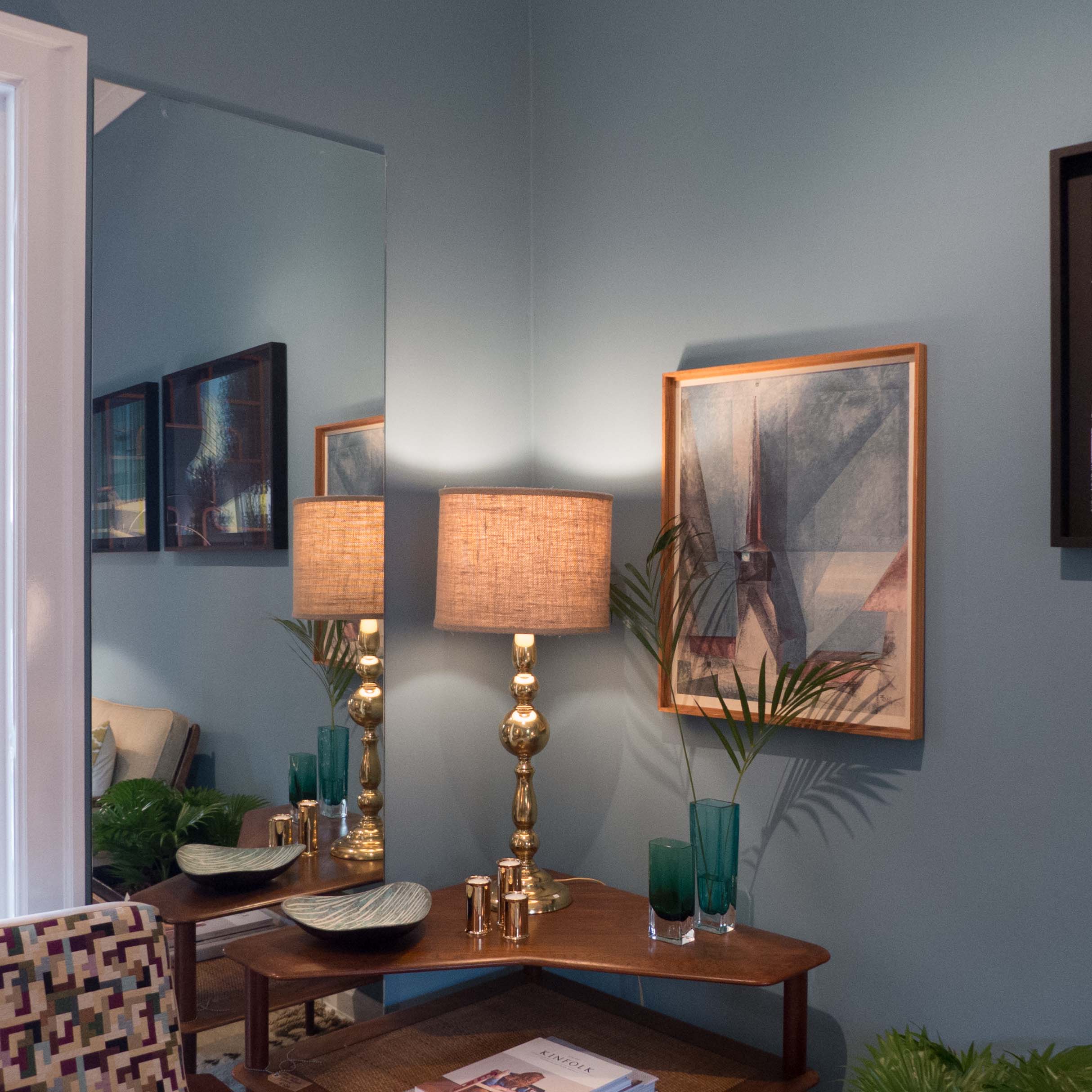
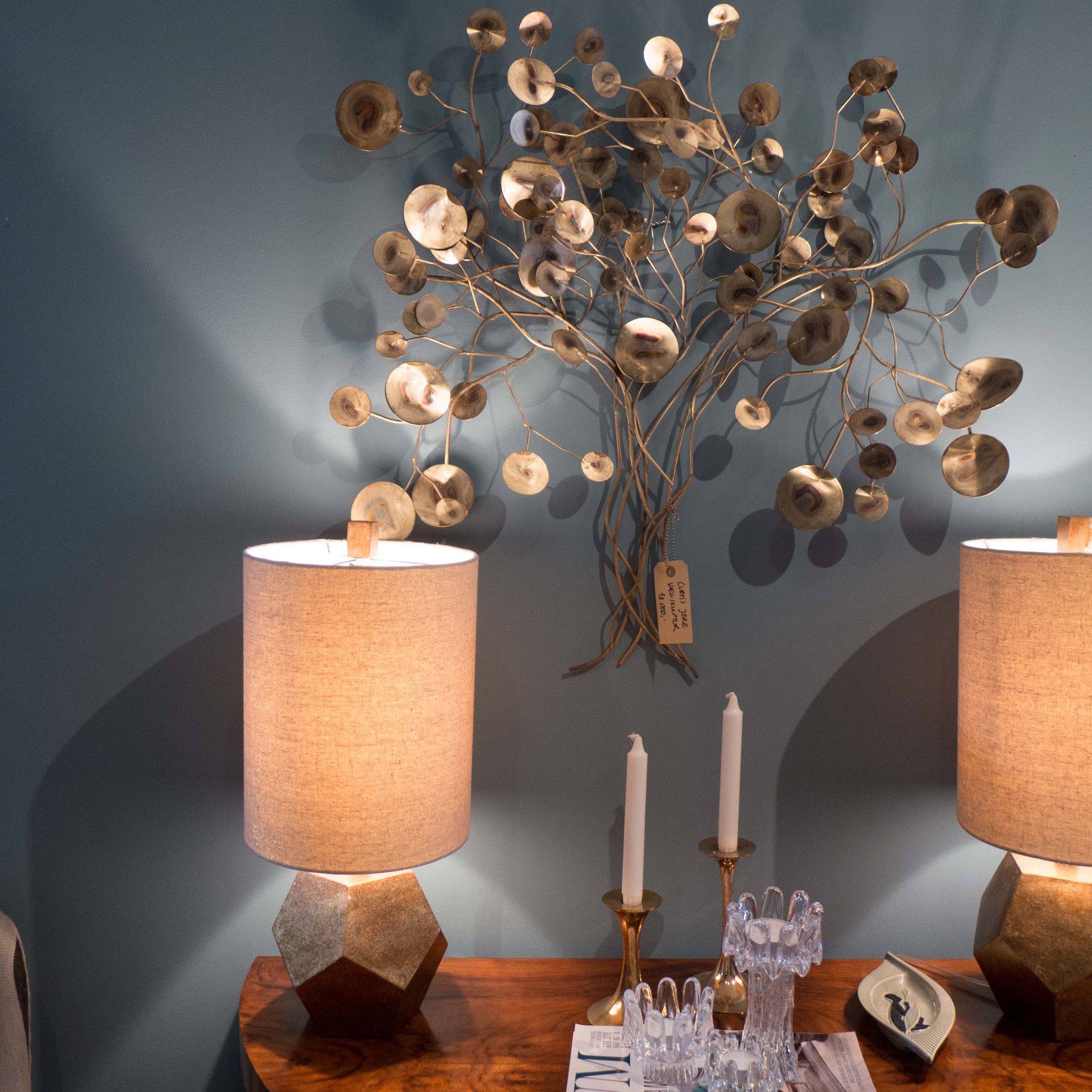
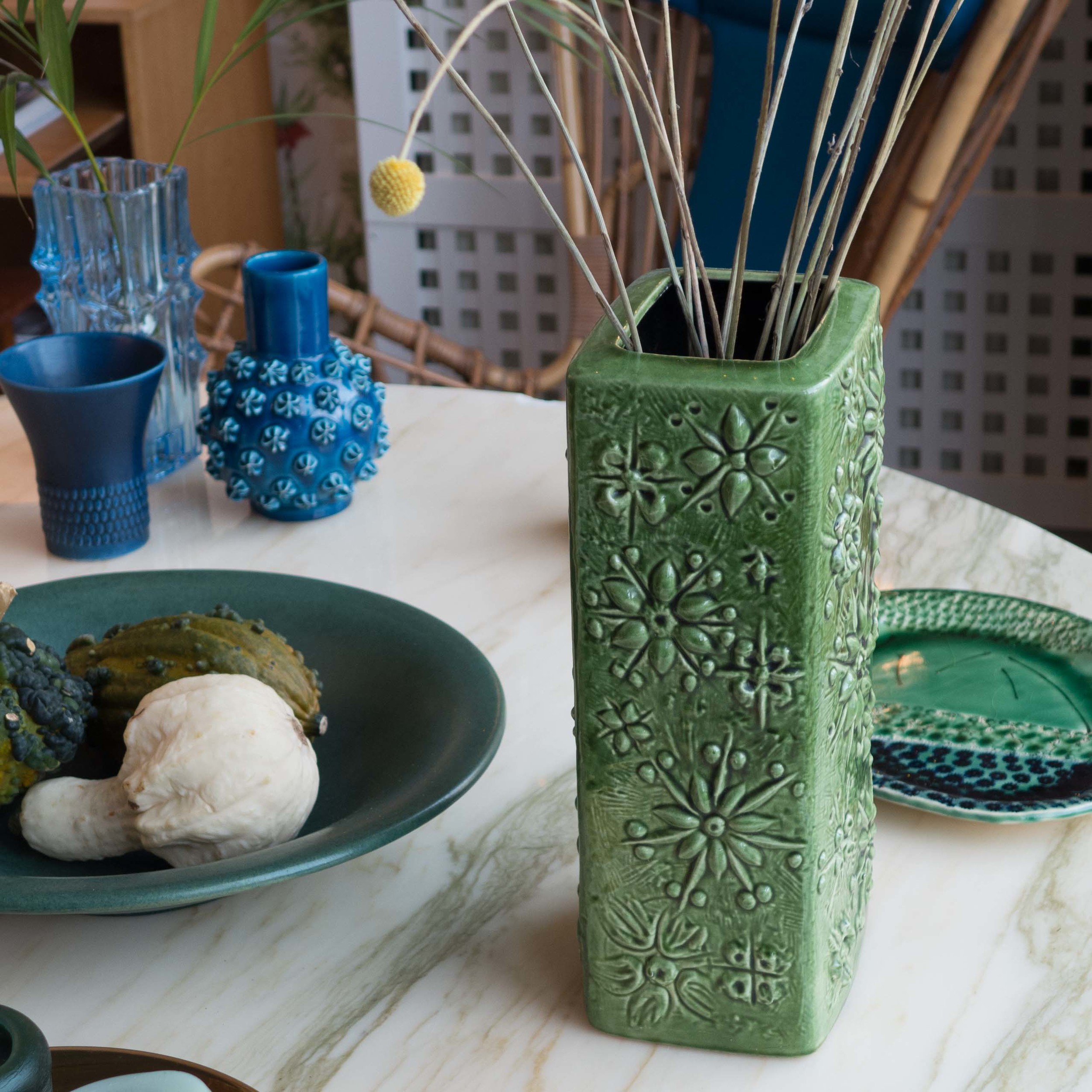
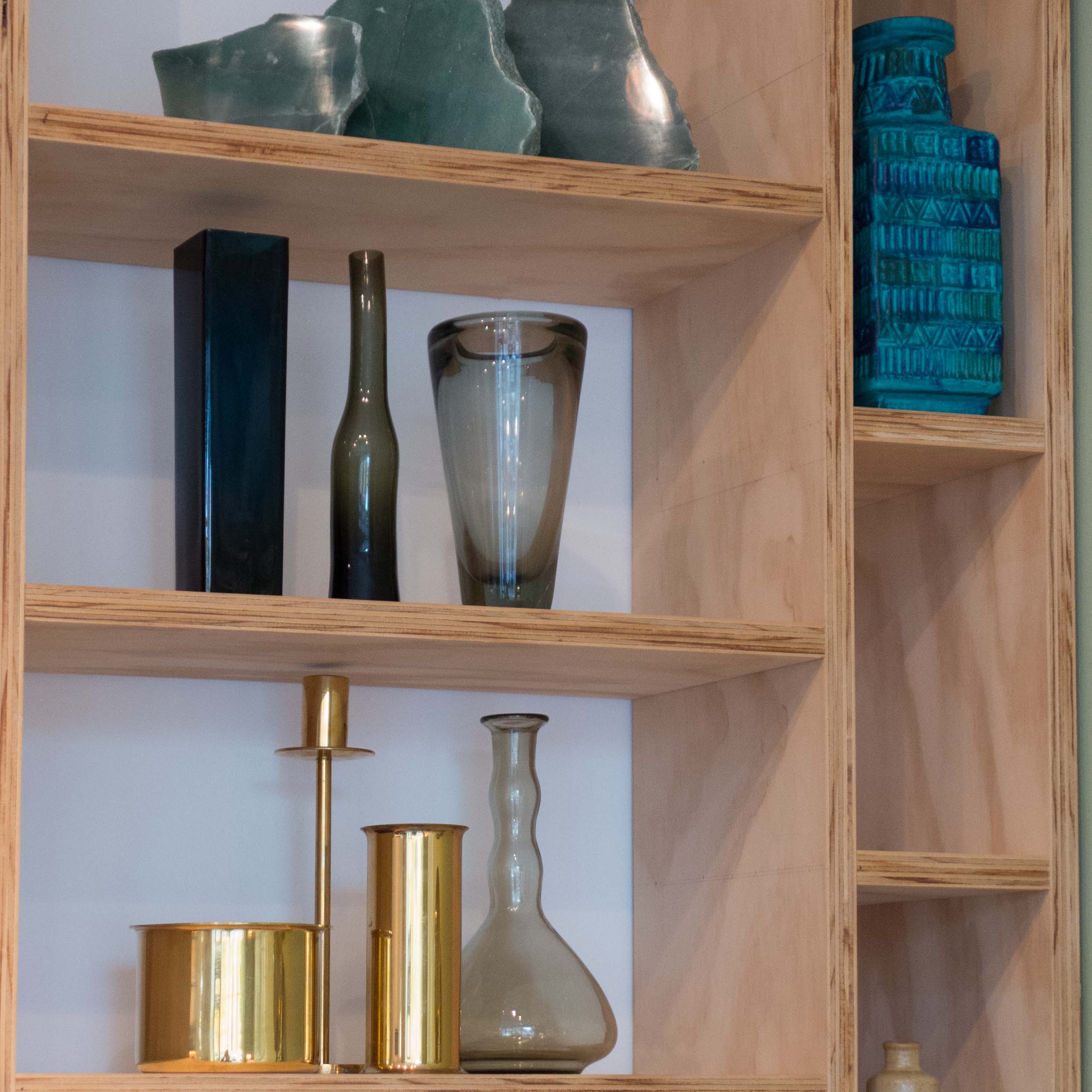
What is unusual at Next Door is the striking and confident use of strong colour and strong pattern that has not been a part of typical Danish design for many years. Probably the style is closer to that found in Sweden in shops like Svenskt Tenn in Stockholm. The team at Next Door told me that one aim for the shop is to encourage people to use colour and pattern with more confidence. To help they also offer a design and advice service.
Next Door Dag Hammardkjölds Alle 33, 2100 Copenhagen Ø
DANSKmadeforrooms
/
DANSKmadeforrooms is in the rapidly changing Vesterbro area of Copenhagen. In fact it is now two shops a few doors apart. The main shop has furniture, art, books and magazines and lamps while the second shop has kitchenware and glass and table ceramics.
This is a very different Danish taste … still clean and well designed pieces but thinner, more industrial in inspiration but elegant … much of the furniture is metal … it’s sort of stripped back but almost delicate. Certainly very very refined. You get a very strong idea of the aesthetic and the sense of style that drives the shop by just looking at their web site. This is the style and aesthetic also found in furniture from the Copenhagen company Frama so it is not surprising that Dansk sell their stools. This is certainly Danish design but not within the tradition of the cabinetmakers serving comfortable middle-class Copenhagen families.
What is also interesting and unusual for Copenhagen is that many of the pieces are not Danish although without any doubt they have been chosen carefully because they still respect an essentially Classic Danish taste. It is the idea of trying different directions with design here so things do not become complacent. This brings in ideas from other designers and from other countries and says heh … what about this? … what if we give these a Danish twist?
The kitchen shop has concrete floors and industrial shelving to display a good, unusual and very interesting selection of items including storage containers in thin industrial glass, enamelled cookware and storage containers, cutlery and very elegant serving spoons and forks. Some of the pieces are from Japan but then you realise that these don’t stand out immediately so you can see here an interesting exchange of ideas between Japanese and Scandinavian designers … a sense of overlapping taste and a two-way exchange of ideas for the way natural materials can be used and about the way appropriate forms evolve.
DANSKmadeforrooms, Istedgade 80, 1650 Copenhagen V, Denmark
DANSKkitchen, Istedgade 64, 1650 Copenhagen V, Denmark
Anne Black
/This shop is different again and certainly different in its business model. Anne Black is primarily a ceramic company supplying selected shops throughout the world. The pieces are designed in Denmark but produced by hand in their factory in Vietnam.
Obviously, the Copenhagen store on Gammel Kongevej stocks a good range of the ceramics, but they do not dominate the store … in fact far from it. Again, as with the other independent shops in the city, there is a very strong sense of a personal taste behind the selection of pieces that includes women’s clothing (there is now a separate shop for men’s clothing a few doors down) but also French furniture, unusual glass light fittings, textiles, magazines and a very good selection of glassware for the table.

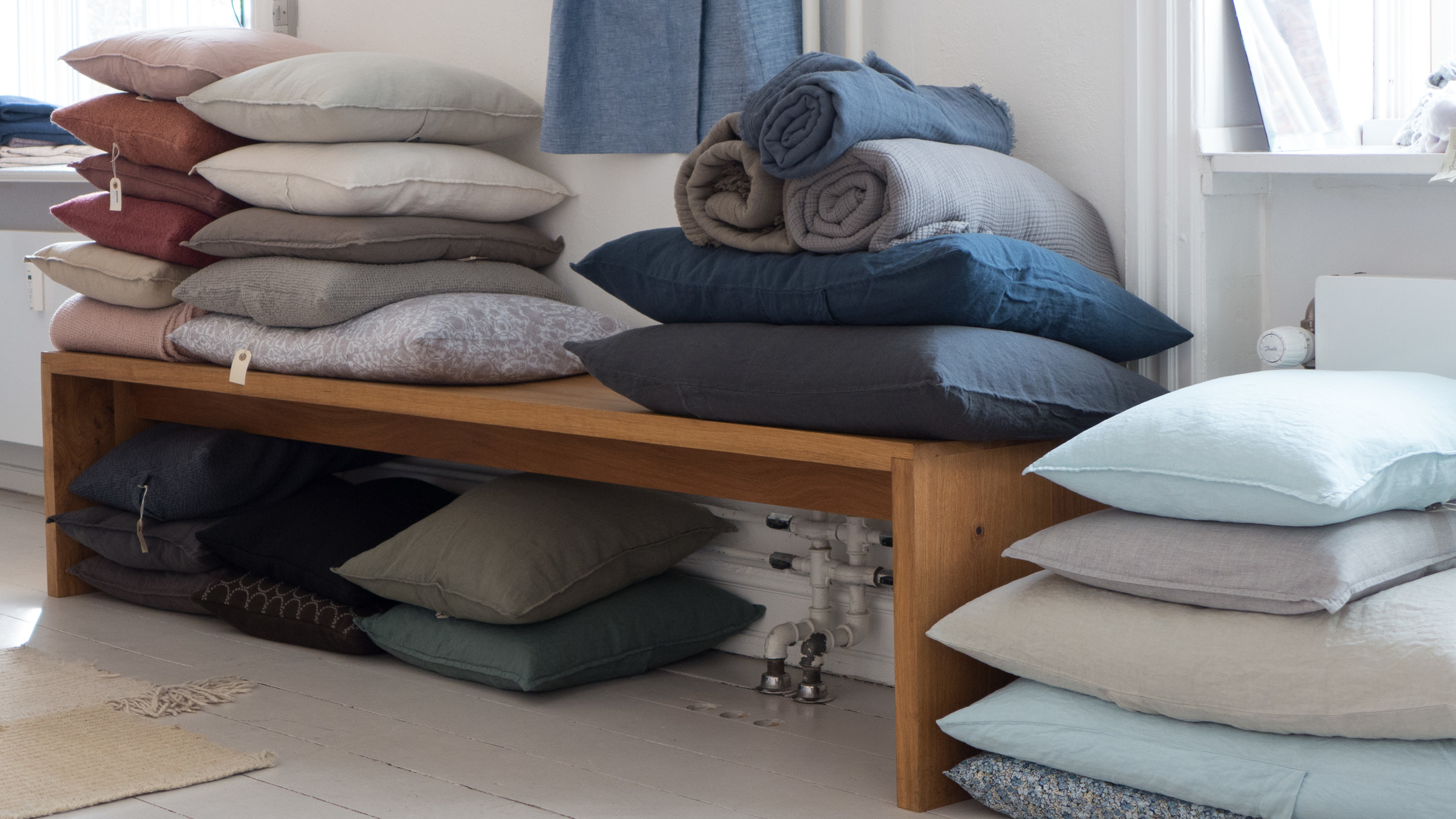
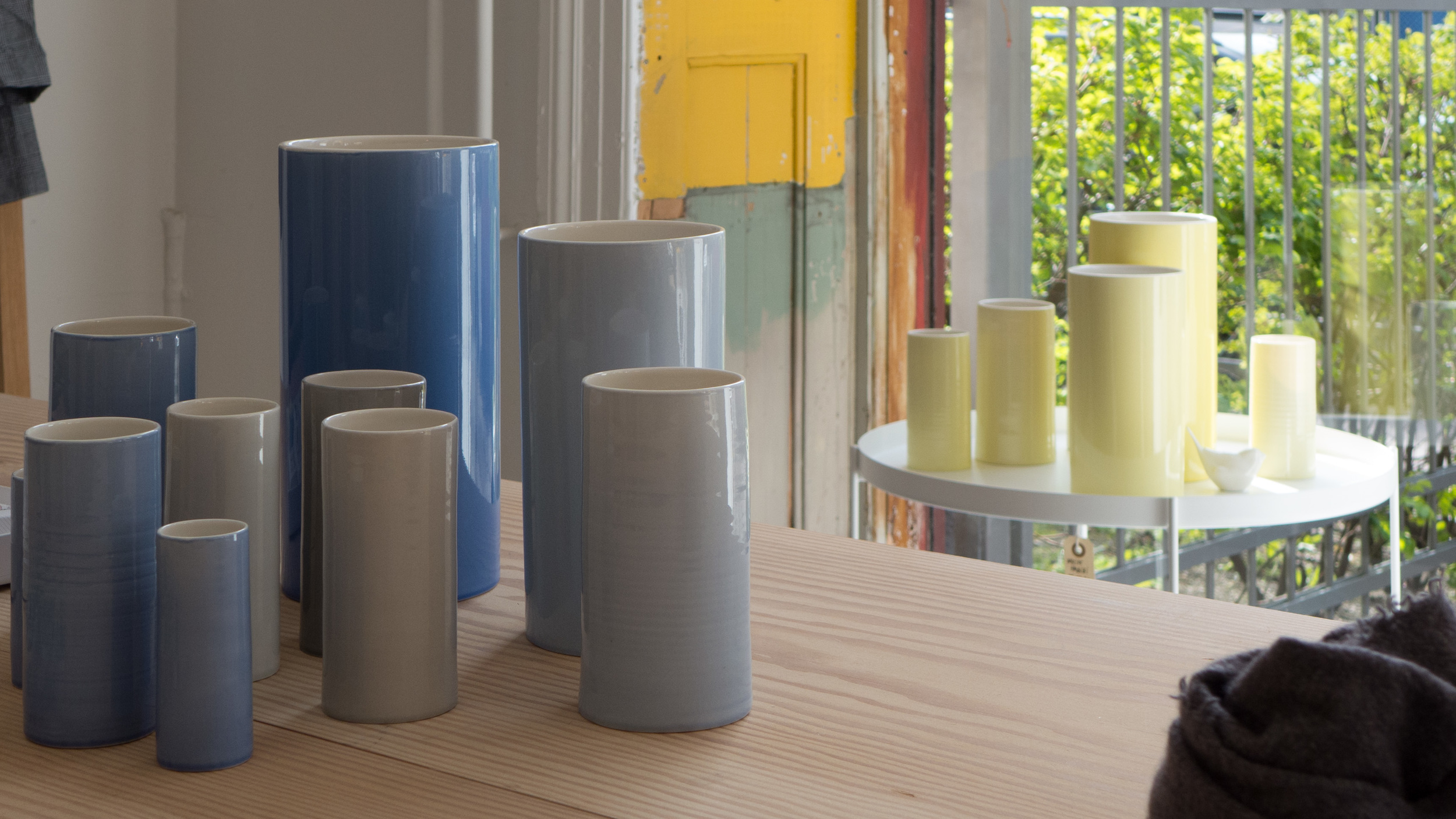
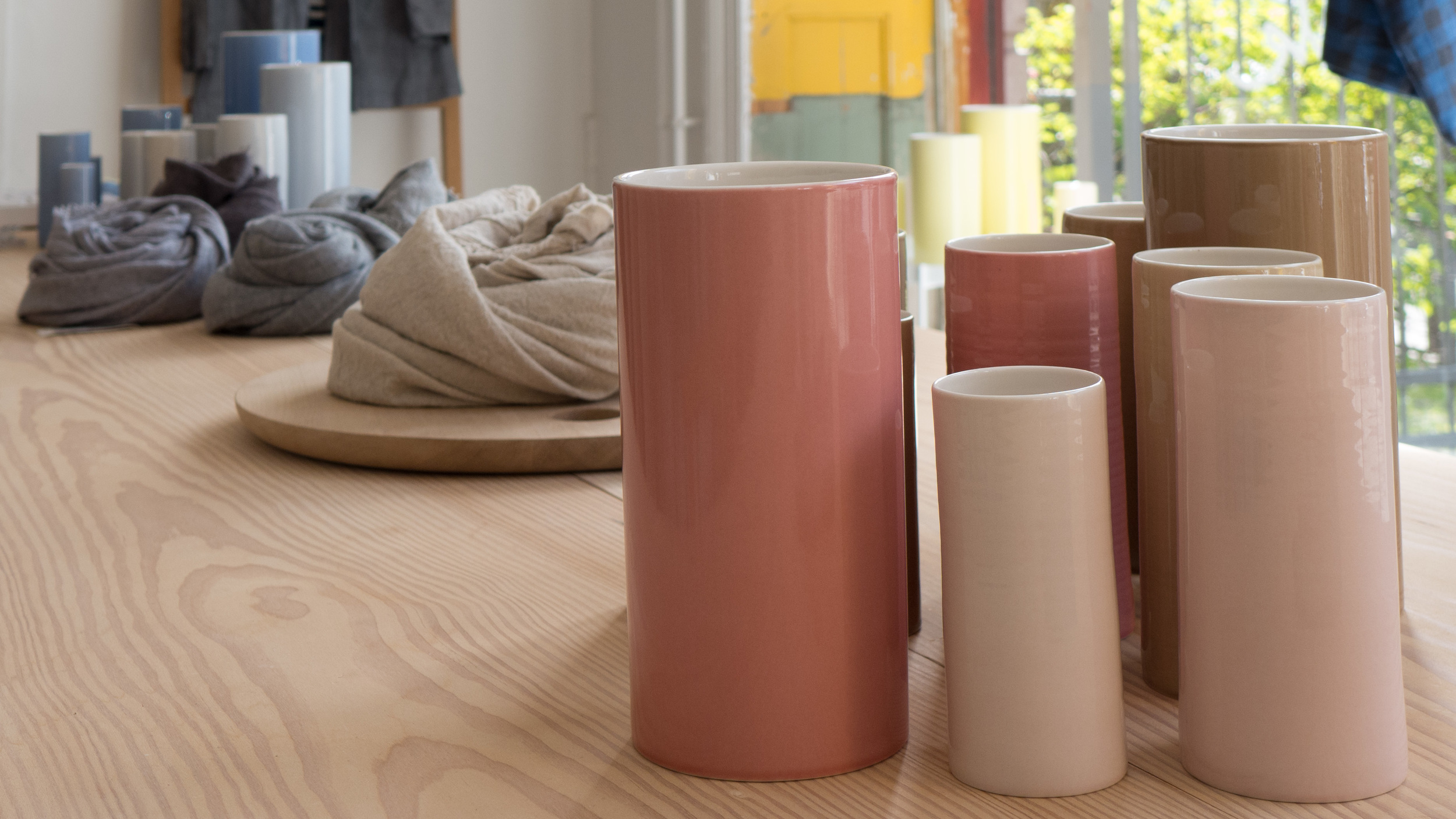
Anne Black, Gammel Kongevej 103, 1850 Frederiksberg, Denmark
the_oak_men
/
Anders Buchtrup Jensen and Peter Hensberg are cabinet makers with their workshops in Braband near Aarhus and are the_oak_men.
Their pieces are strong and robust and they themselves point out that their target market is men buying for themselves or women buying for men.
You can see they have a real love and a real respect for oak and I can appreciate that.
If you have not worked with oak it might be difficult to understand why oak inspires these feelings but when you are working with the wood it seems soft and compliant … some woods are really hard work and almost seem to fight back against the saw or chisel but not oak. And the smell is fantastic … the smell of wood sawdust or shavings and the different smell of burning wood when using a fast drill or electric saw. Oak is also amazing with the various ways to finish the surface and it takes on different qualities with wax or oil or stain and very different effects can be achieved with liming or smoking the timber. The other thing that maybe people generally don’t know is that oak lasts … as oxygen in the air gets to it then it seasons and gets harder and harder and tougher and tougher … try drilling a piece of old oak or banging a nail in. Oak doesn’t make thin elegant furniture because of the broad sweep of the grain (unless it grows very slowly for reasons of the climate of the location of the tree) but it does make fantastic bold strong carved sculptures.
The_oak_men have a real sense of humour … just read their publicity material … or for that matter look at their work.
Their toys (for boys of all ages) are fantastic and exploit the smooth, round sculptural shapes that are best for oak and there is a strong sense of fun … as in the figures of the ghosts with slots across the tops of their heads so they can stand on a desk or shelf holding important notes or postcards. There is a strong tradition in Denmark for producing wooden toys, particularly animals with a simple, cartoon-like reduction of details so again they become sculptures rather than models. The most famous designer of course being Kaj Bojesen but the tradition is alive and strong with Architectmade, pieces from Normann and others and of course the_oak_men.
The advantage of seeing the work of the_oak_men at northmodern is that you can appreciate the huge range of items they make. Many stores unfortunately seem to stock too small a selection.
Their boxes may appear to be almost starkly simple but they are very elegant sophisticated pieces ... the lids have a bevelled edge and drop down into a matching bevel on the sides of the box itself so at the edges you see no flat end grain. There are no knobs or handels but simple smooth holes where you use a finger to hook off the lid. Boxes lids and trays use strong simple colours to compliment the oak.
There are kitchen pieces in the range including a pestle and mortar and there are now several lights with an oak base. Several pieces combine oak with cord or leather and new pieces on show at northmodern included the pendant lights shown above. There was also a new wall shelf with hanging rail. Its called The Shelfie. See what I mean about a sense of humour.
we don't do it like that here .... getting the Iittala habit
/Finnish friends have told me that, when they are about 15 years old, girls in Finland choose a style of china, usually from Arabia or Iittala, and decide on a colour or a pattern and make this known to family and friends.
Then, at events like birthdays, achieving good exam results or whatever, everyone knows what to buy as a present … some plates or cups in the chosen design. Steadily and regularly the collection grows.
Of course the idea is not new … this is a modern survival of the wedding dowry or trousseau … what was called in England in the 1950s and 1960s putting something away in the bottom drawer. From aristocratic families in Italy in the 14th or 15th century to prudent middle class families in Victorian England to the glory box in Australia, the idea was basically the same …. to give young women the best possible start in the expensive business of setting up the first home of their own.
Presumably, this Finnish variation involves more friends and over a longer period and carries with it an interesting message for manufactures … that quality of design and continuity, over and above novelty, are really important and that loyalty to brand or design is possible for long-term marketing. This doesn't thwart new designs or stop innovation: it just means that sometimes step changes should be considered - a new colour that compliments an established range or a new pattern on an existing shape - and of course it means maintaining production and stock over a reasonable period - so no change just for the sake of change.
OK not very romantic but incredibly practical … in those early and expensive days of setting up a new home you can have good, well-made china on the table that reminds you of your friends and family but is also, crucially, what you like, what you chose and what you want. Quite a bit better than five toast racks on the wedding day and quite a bit fairer if you delay marriage or never marry.
The odd thing was that no one talked about what Finnish boys get.
































